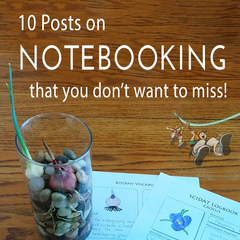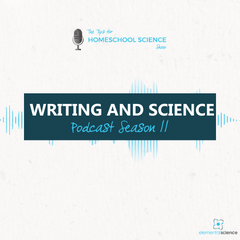
I love living books. These books bring a subject to life in a way that no textbook can.
Living books hold the students’ interest and engage them with the information they are learning in a way that the students will not easily forget. We use them as often as we can in our homeschool—in history, grammar, math, and of course, science!
Living books are written by someone with a passion for the material or by someone who has experienced the story first hand. Because of this, the author is able to pull the reader into the story. He or she presents the facts in such a way that the students hardly realize they are learning.
Today I wanted to share with you two ways you can add living books to your educational plan for science. But before we do that, let’s talk about what you should look for when choosing to use one of these resources for science.
When you are choosing living books for science look for:
- Ones that the students find interesting;
- Ones that are educationally sound, meaning the facts shared are accurate.
Remember that the main purpose of using living books in science education is to engage the students with the material. Doing so, builds enthusiasm for the topic and helps the students to remember what they have studied.
LIVING BOOKS AS SUPPLEMENTS OR SPINES
So, now that you understand a bit more about living books, how can you incorporate these resources into your educational plan for science?
You can use living books as supplements to your current curriculum or as spines to teach science to the students.
1. LIVING BOOKS AS SUPPLEMENTS
If you already have a science curriculum that you love, you can add in living books to reinforce or spice up what the students are learning.
To do this you would continue with your curriculum as planned. Then, set aside one day each week to follow up with a trip to the library to look for living books relating to the subject.
In this case, the living books play a supportive role, solidifying what the students have learned. The students benefit from the added exposure to the material.
When you use living books as supplements, these resources will serve to deepen the students’ appreciation of what they are studying.
2. LIVING BOOKS AS SPINES
Another possibility for integrating living books is to use them as spines.
In this case, the living books act as the outline for your studies. These books become the main presentation source of the material the students are learning.
In the early years, you can use living books exclusively to introduce your students to the world of science. As the students get older, you need to add in scientific demonstrations, experiments, or observations to enhance what they are learning through the living book spine.
When you use living books as spines, the students’ interest in the subject grows and their retention of the material increases.
IN A NUTSHELL
Living books are exciting resources that we can use with our students. We can add these books to our current curriculum or create a plan for science around living books.
Using living books as supplements or spines for science can take a bit more work on your part. This type of plan is not as cut-and-dry as a textbook with a teacher’s edition, but it can pay off in the long run.
Here at Elemental Science, we believe in the benefits of living books so much that we have created an entire series around this type of resource. The Sassafras Science series uses a living book as a spine. The series offers an activity guide or lapbooking guide; both give you the tools you need to enhance what the student are learning through the living book spine.
We have already done the work of pulling together a living books study for you so that you can get right to the benefits of using these resources with your students!
This article was written by our author,Paige Hudson. You can also find her mixing up solutions for homeschool science atElemental Blogging. If you want to receive more articles just like this, plus our monthly discounts, sign up for our newsletter in the box below orclick here.





